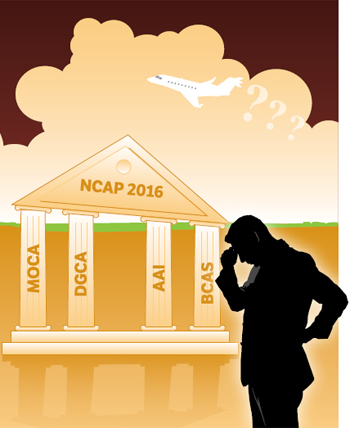General Aviation Ignored in NCAP
We are trying to build a grand palace on a weak foundation. Therein lies the biggest concern for NCAP 2016.

The National Civil Aviation Policy (NCAP) 2016, which has been issued by the Ministry of Civil Aviation (MoCA) on June 15, 2016, is a much awaited and overdue policy document. We must commend the Minister of Civil Aviation, and Secretary Civil Aviation for making an attempt to give a policy direction to the aviation industry for the first time in India.
The policy covers some details but remains silent on a number of key issues. We hope that this is work in progress, and that MoCA will continue to fine-tune and address key issues which have been ignored in this document. One of the biggest segments of the industry which has been ignored is the General Aviation (GA) sector, which consist of small aircraft (below 19 seats), and helicopters. These are mainly used as charter aircraft, or owned by Indian corporates for transport of their top executives. It is prudent to point out that with a fleet of 280 helicopters, 150 business jets, and 150 turboprops, the GA sector consists of a fleet of almost 580 aircraft, which is as large as the commercial airline fleet in India, if not larger. There are 130 non-scheduled operators (NSOP), most of whom have been hurting, and some have shut shop in the past few years due to poor policy, irrational taxes, and infrastructure for GA in the country.

The policy makers are strangely silent on this segment, and have not addressed any concern of the GA sector, be it infrastructure, day to day ease of business or taxation issues. The policy makers remain strangely ensconced in their ostrich-like approach that the only relief that GA needs is to convert into scheduled commuter operator (SCO) and serve the regional routes. Somehow, it hasn’t yet dawned on them that small aircraft are also used by the Indian industry leaders and to access places of their business interest, and provides security and safety to their movements.
Just as political leaders hire aircraft to access their areas of interest by using chartered aircraft and helicopters, industry leaders also need to use the same by either owning aircraft or chartering them. It is imperative for the Government of India to make this an easy process for them for the sake of enabling growth in the country. The perception of GA being used “by rich people who can afford it” needs to change.
The other major concern of the policy is that it does not give a clear-cut vision of implementation. No good policy is worth the effort if it cannot be implemented. The NCAP 2016 falls short of strengthening the pillars of the government which are to implement this policy. The DGCA, BCAS, AAI and even MoCA are functioning in a predated mindset, by and large. By having a few capable bureaucrats at the top, they fall woefully short at the mid and lower level of staffing of people of adequate professional competence, drive and integrity, to oversee the implementation of the policy. The NCAP 2016 should have addressed ways of strengthening these pillars by making adequate provisions to staff, fund and skill the human resource of these agencies, and make them accountable for the implementation of this policy. We are trying to build a grand palace on a weak foundation. Therein lies the biggest concern for NCAP 2016. I hope we are able to address this at the earliest.





